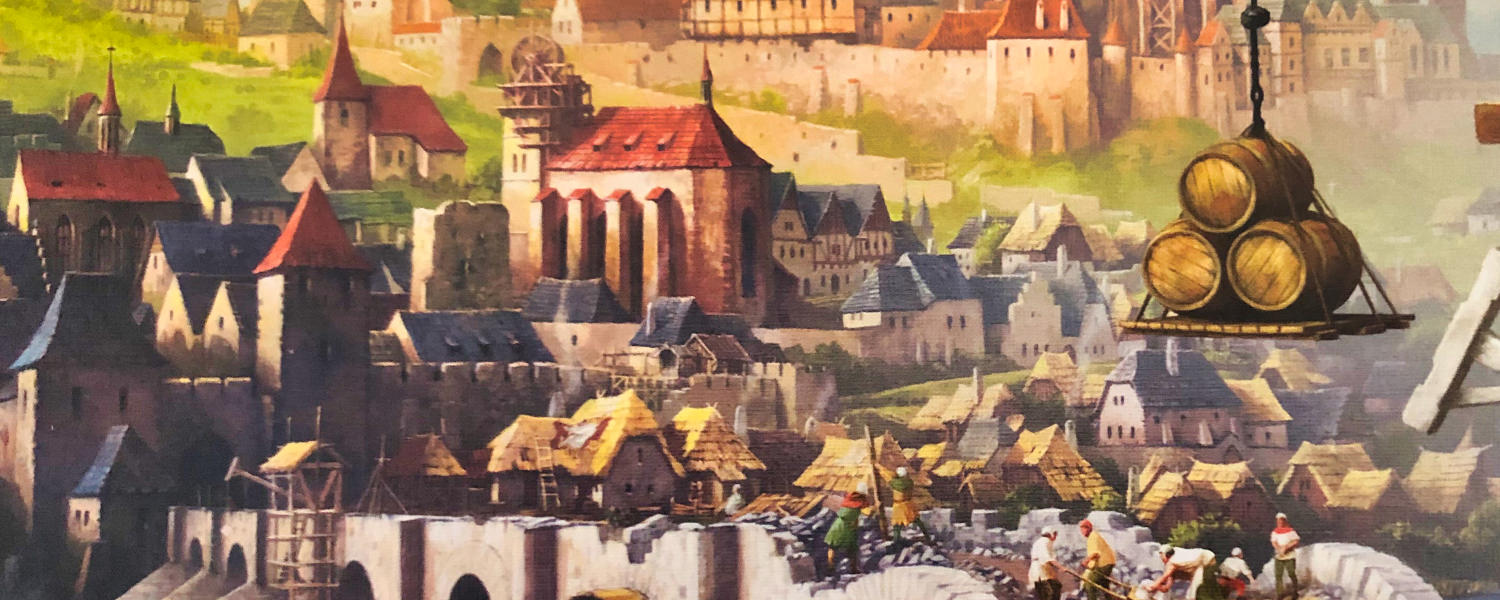
Praga Caput Regni
At night in the Bunkr live music with freshly tapped Budvar and during the day photo work for the school report from St. Vitus Cathedral - these are my oldest memories of one of the most beautiful cities in Europe. Back then, the Czech state was still young, passports were checked by heavily armed soldiers at the border, and a whiff of glasnost wafted around your nose. The hotels in the Prague 4 district were inconceivable concrete blocks to us, but the people in the pub next to the hotel were incredibly friendly. After breakfast at the hotel, we took the metro directly to the historic Old Town. As soon as you left the long escalators of the metro station Muzeum offered a great view of the historic Wenceslas Square.
On the way from Wenceslas Square to Prague Castle, it became apparent why the study trips of our Fachoberschule für Gestaltung (technical college for design) always lead to the capital of the Czech Republic. The incredible density of architectural diversity in the historic Old Town is probably unique in the world, and our art history teacher was running at full speed during the five days. The Powder Tower, the astronomical clock at the Old Town Hall, the castle with St. Vitus Cathedral and, of course, the Charles Bridge are only a small part of the sights. And now, 28 years later, I get the opportunity to help build the golden city of a hundred towers. Praga Caput Regni is an expert game for one to four people by Vladimír Suchý in which we try to shape medieval Prague according to the wishes of our King Charles IV.
Off to Prague
For the first game of Praga Caput Regni, you should definitely allow some time. First of all, the St. Vitus Cathedral, the Hunger Wall and the Charles Bridge have to be assembled as 3D components and partly glued together. The action wheel and the player boards are also two-layered and require a bit of tinkering. The rest of the game preparation is quite quick and is described in detail in the rules. Each player receives an action board and a player board on which the number of his resources is stored.
Build more beautiful
The basic gameplay is quickly explained. On his turn, the player selects an action tile from the action crane and performs the action and, if necessary, an additional action. Afterwards, the action tile is put back and the action crane is turned over. The game ends once each player has had sixteen moves. There are a total of six possible actions:
- Manage Mines: The player can either produce gold equal to his mines, or get one gold and another gold mine
- Manage Quarries: The player can either produce stone at the level of his mines, or get one stone and another quarry
- Upgrade an Action: The player places an available upgrade token on his action board.
- Construct a Wall: The player places a tile adjacent to his action board
- Construct a Building: The player places an exposed building tile on the game board
- Building the King's Path: The player moves his marker on the king's path
With the few action options, you might ask where the expert game is, but already when choosing an action tile from the action wheel, there are already numerous effects. For example, you may receive bonus points for actions or even have to pay for them with gold. These synergistic effects are further enhanced by the actions to be selected, e.g. wall and building construction and the construction of the King's Path.
When building a wall, the player chooses one of the wall tiles on the table, pays the cost of building it, and places it on his action board. The rewards for building the wall are shown in the center of each tile. If the player already has other wall tiles on his action board, there may be additional rewards (corner bonus, adjacency bonus) for building. Many wall tiles allow movement on the levels of the hunger wall where there may be more points to get.
The possibilities for Construct a Building are even more varied. Once you have chosen a building tile, you must first decide on a building site. The King's Path divides the city into Old Town and New Town. The building sites in the old town are particularly sought after and therefore more expensive. So in addition to the building costs, the land must also be paid for there. As soon as a marketplace is enclosed by buildings, there is a marketplace bonus for the builders and, as with wall construction, there may be a corner and adjacency bonus. Many building tiles allow movement on the steps of St. Vitus Cathedral.
When building the King's Road, you will eventually get to Charles Bridge via the road hexes. The effects on the road hexes are performed directly, but some must be paid for. At Charles Bridge, the player buys planks and receives the rewards shown. Depending on where the player places the plank on the bridge there are further rewards.
On the player boards, in addition to the resources for stone and gold, there are two other tracks:
- You can get Technology Tokens from the Technology Track. Level I and two tokens give permanent effects, while tokens with level III or IV can be used once.
- If the player advances on the Track of the Charles University points are awarded.
There are also a lot of points to be gained in the final scoring. Unresolved Plazas, walls and of course the steps of Hunger Wall and St. Vitus Cathedral bring a lot of points. Eggs have a special meaning in the game and also give points again at the end.
If you don't have any other players at hand, you can also make the journey to Prague on your own. In this mode, the goal is to score points. Delicious Games have published another solo mode on their website, where you compete against the best builder of King Charles IV. The game against Peter Parler is much more exciting than the normal solo mode. All the necessary files can be found at: deliciousgames.org/praga-caput-regni-en
When are you going to Prague again?
The short answer is: preferably right away, because on the board we will be guests in Prague more often in the future. The game has totally inspired us. After one or two games you have internalized the basic gameplay. After that, however, the game offers countless possibilities to develop strategically. There are points to be scored at every turn, and the numerous synergy effects are the main attraction of the game. The action wheel determines price and rewards for actions and is the haptic highlight of the game. In a simple but effective way, it also regulates the number of rounds and blocks once the end of the game is reached. The great haptic elements are also found on the player tableaus.
Another very positive aspect is the short playing time, which is unparalleled considering the complexity. Two players can complete the game within an hour. However, the course of a game is always different and can be additionally influenced by interchangeable tiles for the Hunger Wall, Cathedral Steps and Charles Bridge. And whoever is bothered by the 3D components, e.g. in a round with four players, can simply leave them out. Cathedral Steps and Hunger Wall are printed on the game board. The instructions are understandable and also provide historical background information on the buildings that appear in the game. Who would have thought that, according to legend, eggs were used as mortar for the Charles Bridge?
However, there are some minor criticisms: The multitude of synergy effects and the colorful game board confuse even experienced players at the beginning. Praga Caput Regni is also the first game for which I have afforded an inlay. With the amount of great material, it would be a shame to have it all flying around loose in the box. The somewhat laborious assembly of the components before the first round is certainly not everyone's cup of tea either. However, these points don't really carry any weight. Praga Caput Regni is for us one of the best expert games that came on the market last year.
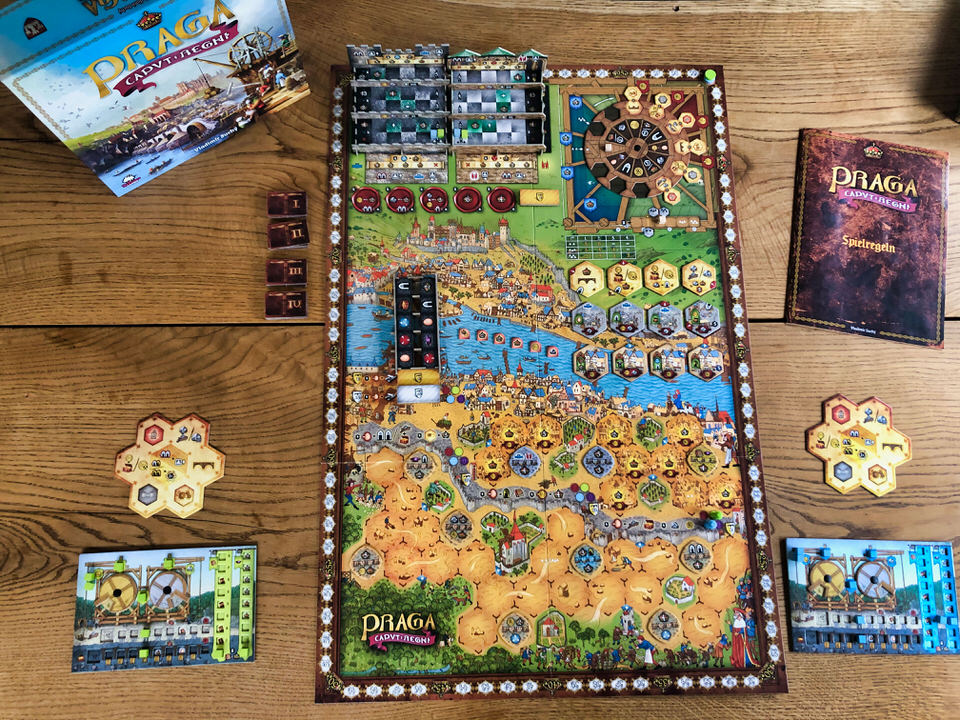
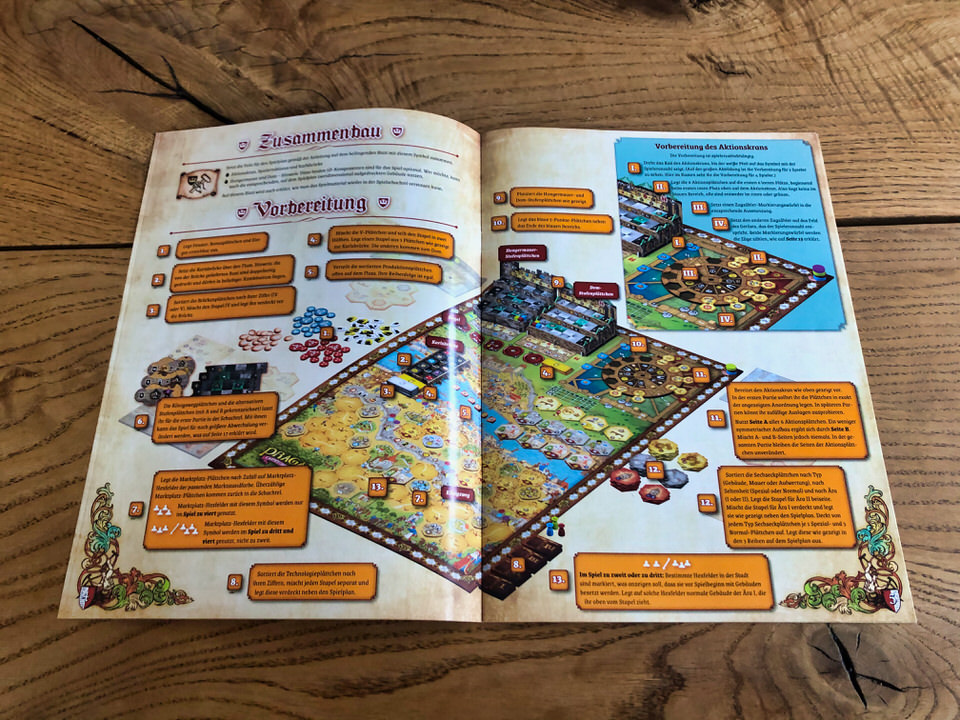
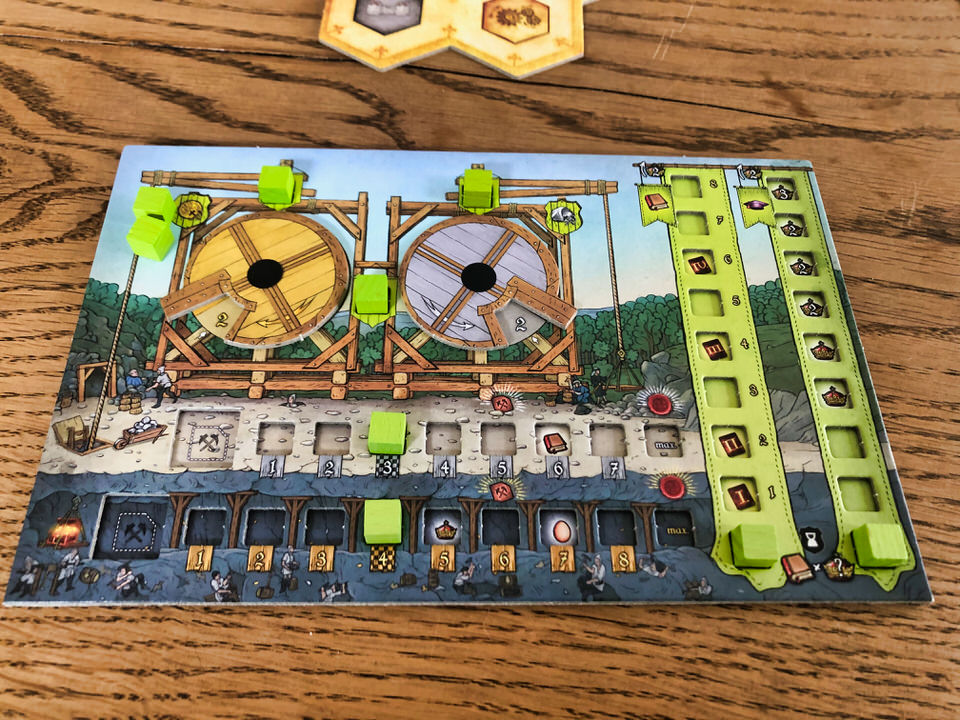
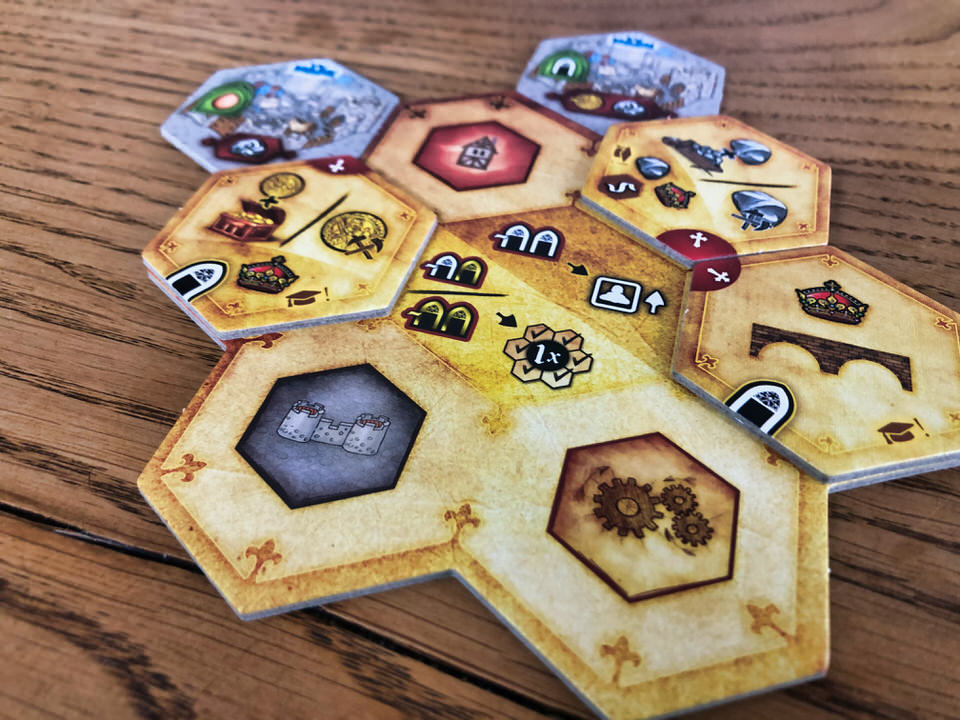
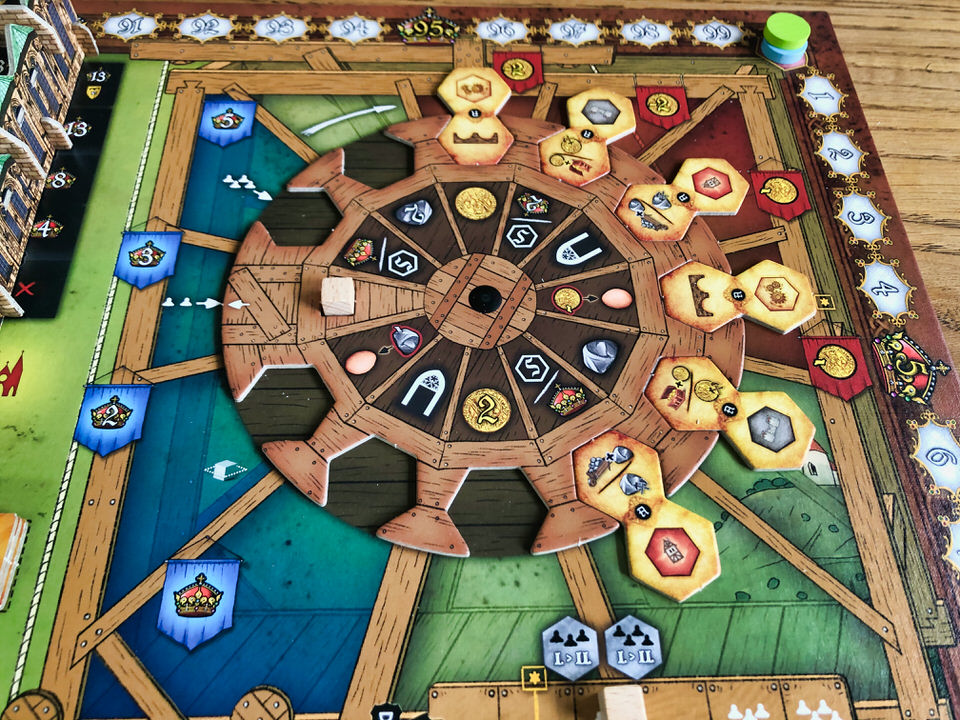
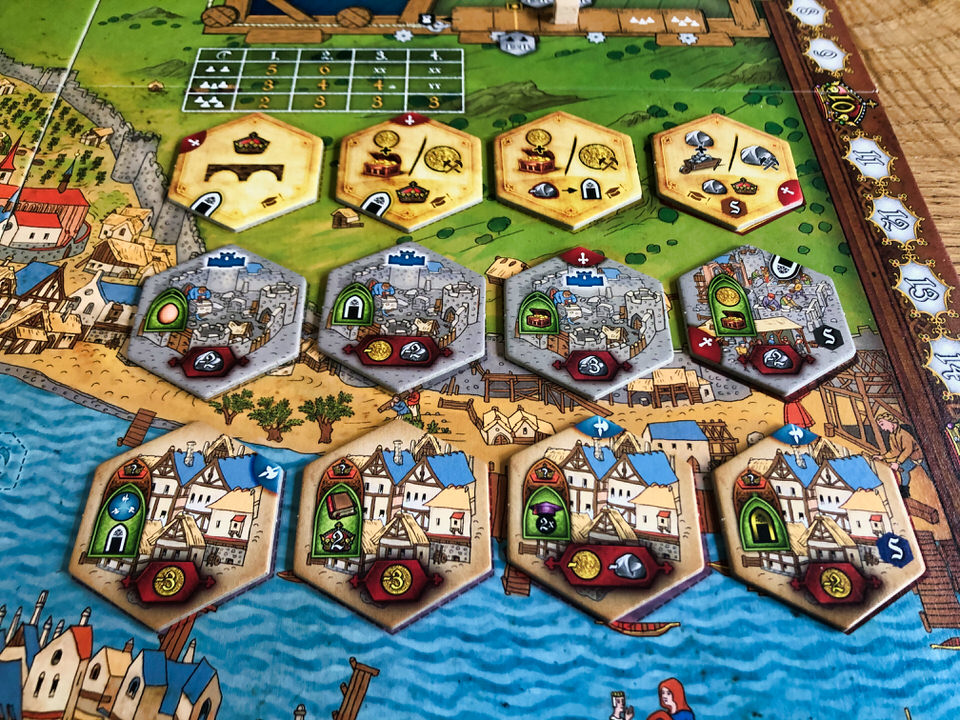
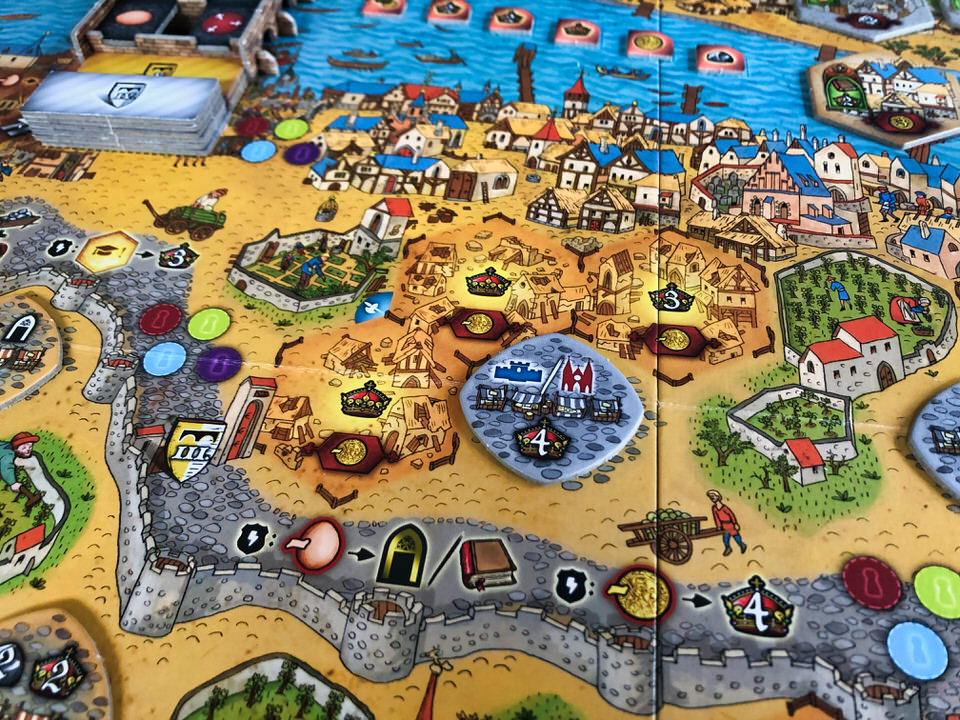

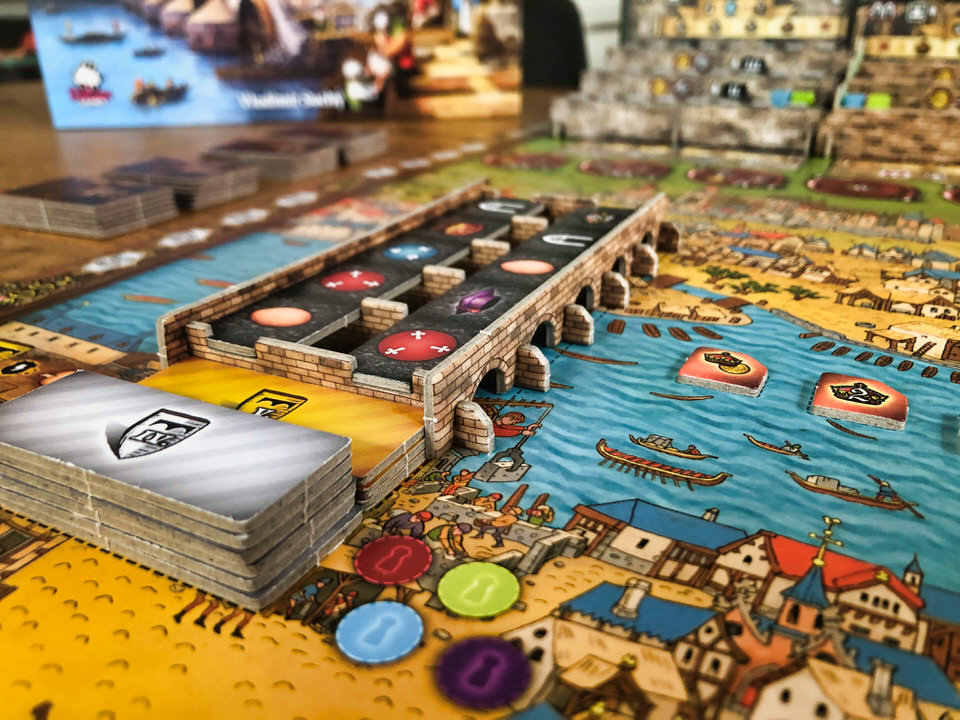
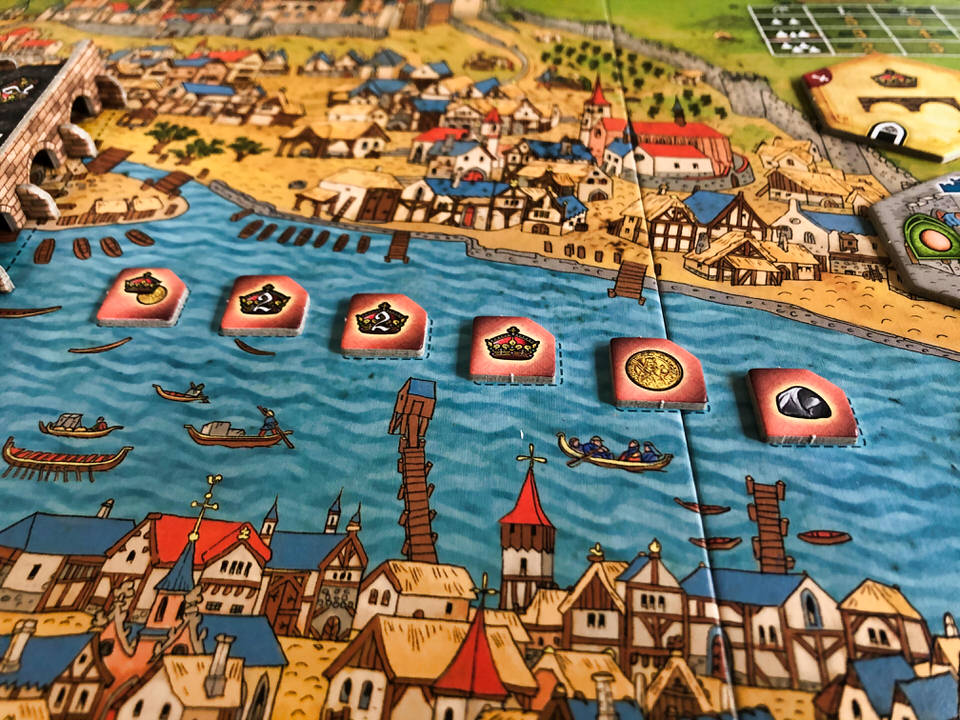
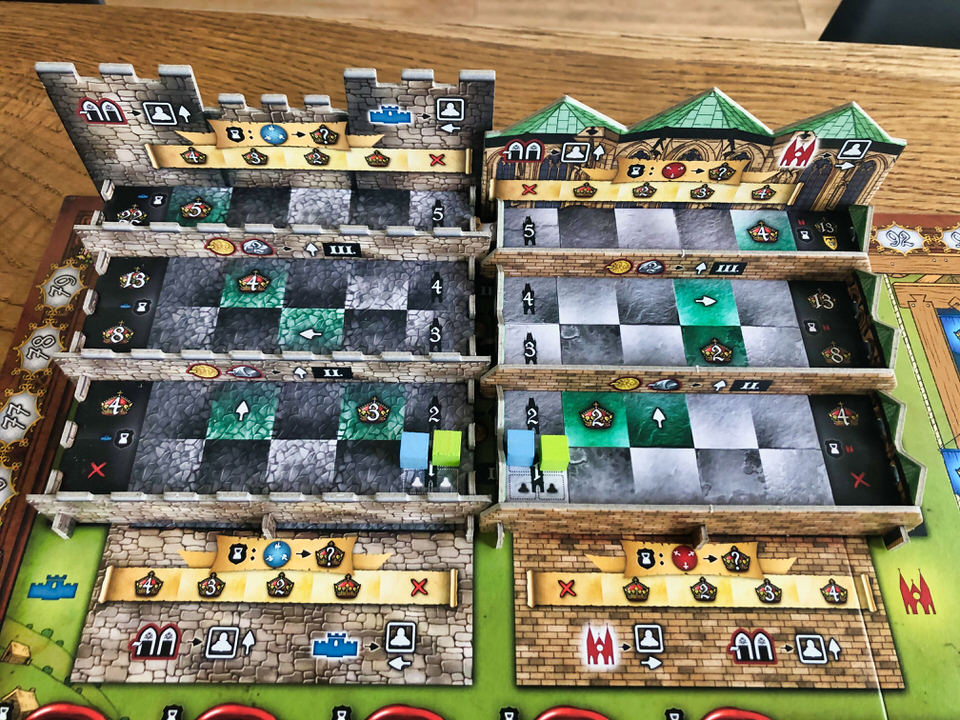
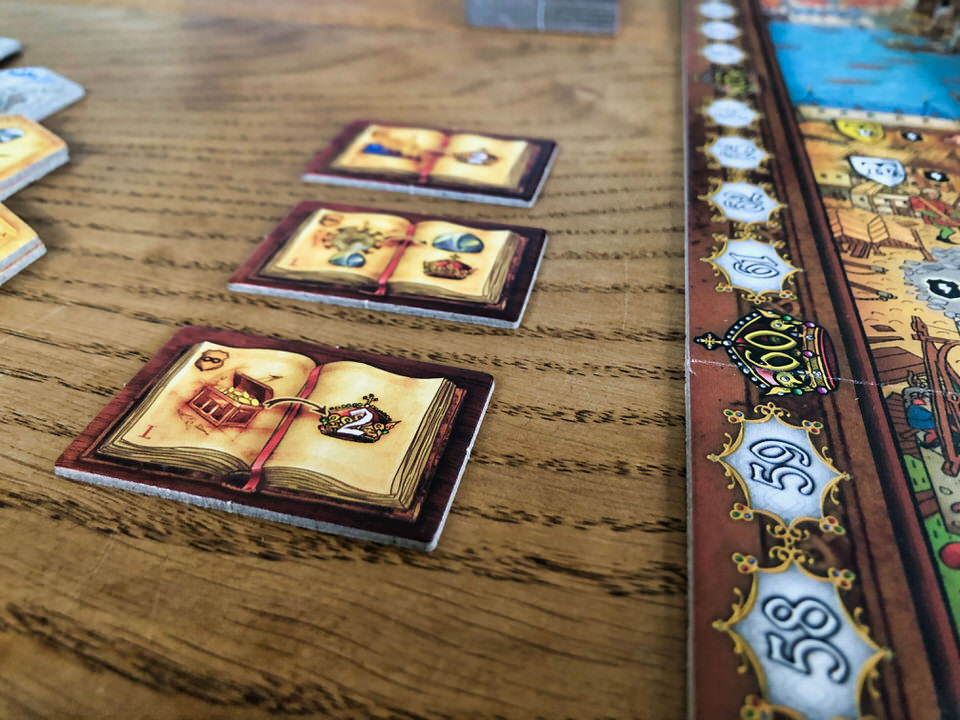
Leave a comment